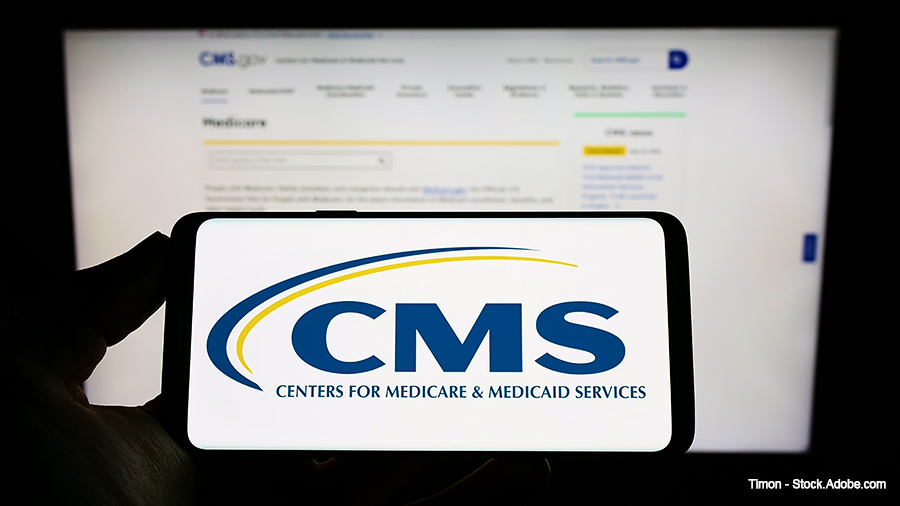 Many are familiar with the Centers for Medicare and Medicaid Services’ (CMS) two-midnight rule, which was created in 2013 and distinguished between observation-appropriate and inpatient-appropriate hospitalizations. However, some hospitalists may not be aware of the recent changes that went into effect on January 1, 2024, thanks to the recently published 2024 Medicare Advantage and Part D final rule (CMS-4201-F).
Many are familiar with the Centers for Medicare and Medicaid Services’ (CMS) two-midnight rule, which was created in 2013 and distinguished between observation-appropriate and inpatient-appropriate hospitalizations. However, some hospitalists may not be aware of the recent changes that went into effect on January 1, 2024, thanks to the recently published 2024 Medicare Advantage and Part D final rule (CMS-4201-F).
Prior to this rule, Medicare Advantage plans often deviated from the two-midnight rule based on contractual agreements with individual hospitals or healthcare systems, internal policies, or proprietary guidelines. In the plans’ views, these contractual agreements and other stipulations superseded most, if not all, compliance requirements with CMS Conditions of Participation, which followed the two-midnight rule. This led to very gray definitions of the observation window by Medicare Advantage plans and increased inpatient claim denials and frustration for hospital utilization management programs who felt Medicare Advantage plans were cherry-picking how and when they applied Medicare regulations. This led CMS to publish the final rule, which states Medicare Advantage plans must adhere to the two-midnight rule as described in the CMS Conditions of Participation.
While there is no penalty associated with this specific rule, it is definitely a step in the right direction.
“The final rule is a major step in clarifying Medicare Advantage payor responsibility when patients are admitted to hospitals. However, there remains a lack of oversight and enforcement that we hope CMS will address in the near future,” said Rick Hilger, MD, medical director at HealthPartners UM, adjunct professor of medicine at the University of Minnesota Medical School in Minneapolis, and current chair of SHM’s Public Policy Committee, which worked with SHM to craft its comments on the proposed rule.
In addition, Medicare Advantage plans must comply with the same guidelines CMS sets forth for long-term acute care (LTAC) and rehab placement and not create their own criteria decreasing avoidable days in the hospital setting.
Aziz Ansari, DO, FAAHPM, FACP, SFHM, professor of medicine and associate chief medical officer of clinical optimization and revenue integrity at Loyola University Medical Center in Maywood, Ill., and the chair of SHM’s Physician Advisor SIG said, “With the implementation of this rule, the hope is that Medicare Advantage plans will stay true to the two-midnight rule and next level of care placement as directed by CMS which will ultimately decrease the financial burden on the patient, move our patients to get the next level of care they need sooner and allow for more fair reimbursement to hospitals so we can continue to serve our populations.”
Medicare Advantage plans can still deny inpatient status due to lack of medical necessity. This part has not changed. So, it remains imperative that hospitalists provide good daily documentation demonstrating the severity of illness and intensity of services provided. However, there should no longer be any gray area around what Medicare Advantage plans define as their observation period. The rule also limits the use of any screening criteria, such as InterQual or MCG, specifically regarding the determination of status. Overall, the status determination process should be much simpler thanks to the 2024 Medicare Advantage and Part D Final Rule (CMS-4201-F). It’s important to note that CMS will continue to monitor inpatient coverage criteria, in addition to all other clinical matters, to evaluate areas where there may need to be more well-established criteria implemented to best support beneficiary access to the timely care they need.
Dr. Christopher Boyle, MD, a clinical assistant professor and hospitalist at Endeavor Health Medical Group in Evanston, Ill., and the vice chair of SHM’s Physician Advisor SIG, shared his thoughts, “This is a big help and a needed step in the right direction from CMS. Medicare Advantage is growing rapidly, and now is the way that more than 50% of Medicare beneficiaries receive their coverage. The rule provides welcome clarity for physician advisors on how we status patients as inpatient or observation as well as much more, including how and when Medicare Advantage plans care use prior authorizations. Really it makes clear that for hospitalized patients Medicare Advantage plans must provide, at minimum, the same benefits, with the same rules, that traditional Medicare beneficiaries would receive. This clarification from CMS helps take out some of the uncertainty from statusing patients and helps us simplify our own internal processes so we can focus on making sure all our Medicare patients are in the right status and spend less time on individual payor coverage criteria or policies.”
Additional benefits of the rule
Limitations on prior authorizations: Prior authorizations can only be used to confirm the presence of diagnoses and to make sure other criteria are met based on traditional Medicare criteria.
Skilled nursing facility/rehab and LTAC placement: Medicare Advantage plans now also must follow 42 CFR part 409 regarding skilled nursing facility placement and 42 CFR 412.622(a)(3) regarding inpatient rehabilitation placement.

Dr. Craven
Dr. Craven is vice president of case management, physician advisor, and hospitalist at McLeod Health in Florence, S.C.
I don’t see how this changes anything. No penalty for straight up denials.
So they are limiting the use of InterQual? My hospitals all use InterQual. What is InterQual’s functinality being replaced with? I’m not sure how limiting the use of tools that give you a reproducible answer is simplifying anything. If it reverts to clinician’s estimates about 2 midnights, then you just produce a bunch of arguing and inconsistencies.